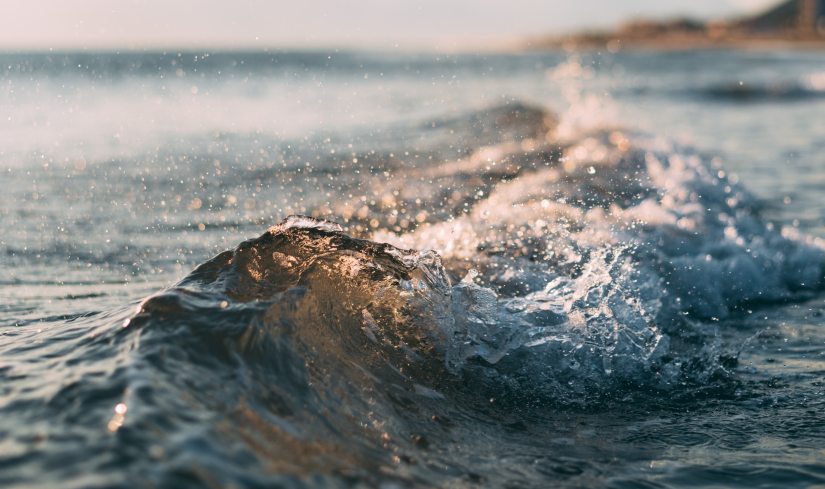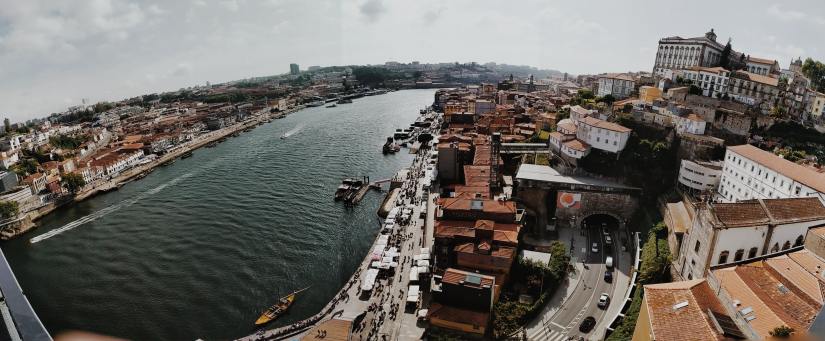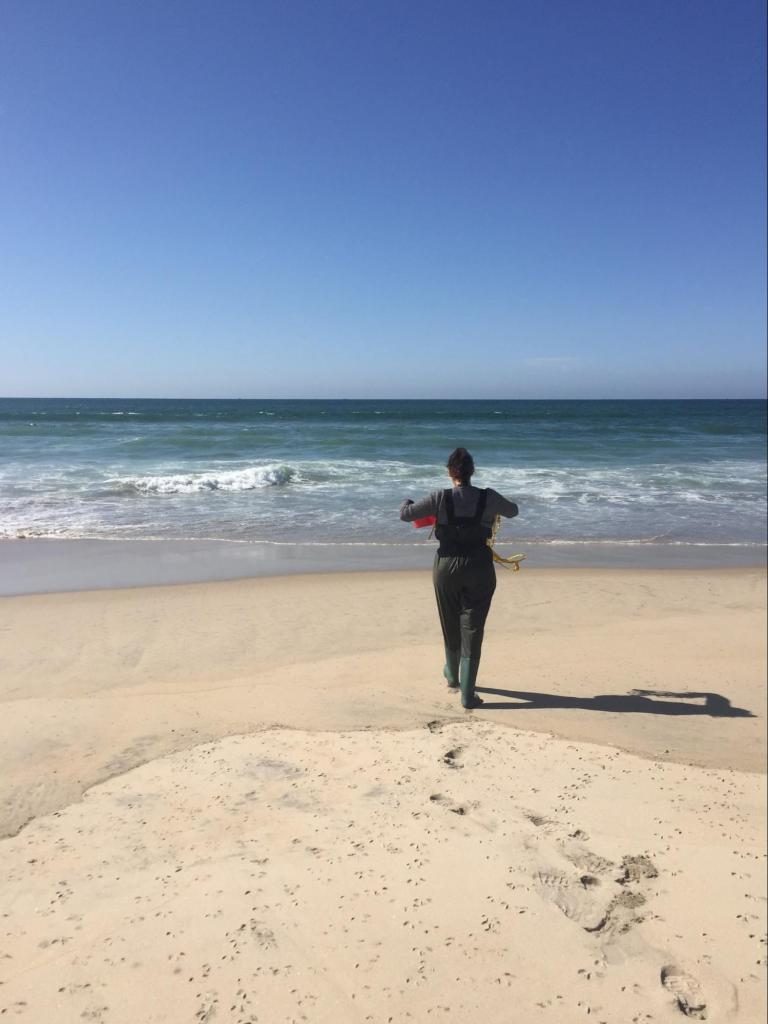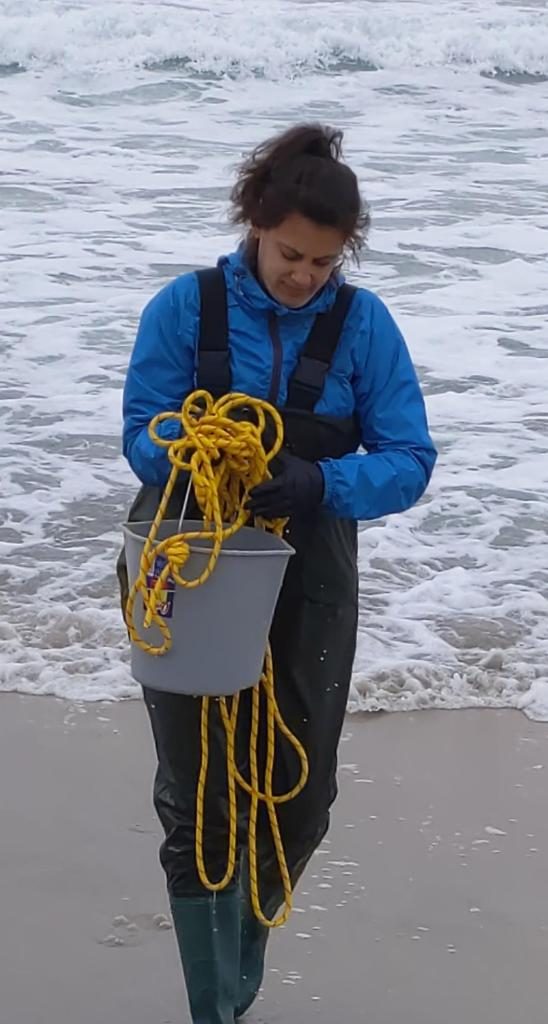Written By: Lucia Cancelada, PhD Candidate @ UCSD
Imagine what lies beyond the ocean surface.
I bet you are thinking about the big stuff: fish, dolphins, whales, coral reefs, maybe some algae here and there. To my surprise, I recently learned that the picture is way more complex than that. Rather than a huge pool of plain water, the ocean is an intricate network of living beings.

Bacteria might be too small for us to see, but they are the most abundant marine organisms. Several times smaller than the thickness of a human hair, microbes live, reproduce and die in this gigantic habitat. Some bacterial species are more likely to be found in a particular area; while others are usually found together, perhaps because they mutually benefit from this relationship. Bacteria can form “neighborhoods” in the ocean, along with other microbes such as viruses, microscopic fungi, and protists. These incredibly complex communities, also called microbiomes, have captured the interest of many scientists worldwide.
Imagine now the waves breaking in the ocean.
Every time the seawater crashes, tons of air bubbles are produced. Bubbles bursting onto the water surface “explode” and leave behind tiny droplets. Some of them, smaller than a grain of sand. These particles, also known as aerosols, may be suspended in the air for a long time. Sometimes even long enough to be transported far distances.
Depending on the wind direction, aerosols can travel from the ocean to the land. What are these tiny particles made of? Or, in more scientific language, what is the composition of these aerosols?

Unsurprisingly, sea salt and water are the two main components of sea spray aerosol, but since the ocean contains more than just H2O and salt, we expect the aerosols to be more complex too.
Sugars, fats, and proteins are the building blocks of every organism and can also be found “swimming” in the seawater. Researchers have found all of these compounds in aerosols. Scientists have even found whole bacteria coming out of the sea via aerosols! And each unique bacterial ‘neighborhood’ or microbiome will produce its own type of aerosol, shaping what is coming out of the ocean like a unique fingerprint.
Now for the last time, imagine what we are dumping into the ocean everyday.
Think about those plastic bags that get carried away by the wind and end up in the sea. Think about the chemical pollution, the oil spills… and unfortunately think about all the untreated wastewater that ends up in the ocean.
When it rains, water pours onto land and eventually finds its way into rivers. This run-off water carries everything that it touches, including microorganisms and chemicals in sewage, as it moves towards the sea. Eventually, the rivers discharge into the ocean and mix all of this contaminated water into the ocean.

“New” microorganisms that are introduced into the ocean by river runoff, or other human activity, can alter the preexisting microbiome and produce changes in the ecosystem below the ocean surface. It’s like these new microorganisms move into the bacterial neighborhood and start undesired demolitions and new construction.
In addition, many chemical compounds also find their final destination in the sea, from personal care products to pharmaceuticals to pesticides. These pose a huge environmental problem: not only can it alter life and biodiversity, but it can even be hazardous for people living in coastal regions all over the world.
What are scientists doing about all this?
Since 2019, a group of researchers from UC San Diego has been working hard to figure out what is coming out of the ocean and into the air, how human activity is changing the coastal microbiome and if these changes pose hazardous consequences for people. This scientific project is based on the coast of San Diego, California, where untreated wastewater enters the Tijuana River Estuary and discharges into the sea.
I joined the project in the Winter of 2020, as part of my research as a graduate student in the UC San Diego Chemistry & Biochemistry program. I must confess that, while I love chemistry, I don’t fancy the idea of spending my entire time in a laboratory. I, therefore, was very excited when the opportunity to work out in the field came along. Not only do we get to spend all day at the beach doing research, but I am also lucky to share this experience with other students in the program (and make some really good friends).
Every day doing fieldwork has been an intense yet rewarding experience. We usually go to different sites along the San Diego coast to take samples, trying to follow the changes in the water and the air. A couple of us go grab a bucket and collect water to fill our bottles and tubes. Sometimes we just stand at the end of the pier and attach the bucket to a rope to reach the water. Most of the time it is not that easy, and we have to go into the surf zone to take our sample, right where the waves are breaking. Although I love sampling, I honestly don’t like to get soaked, so we have to wear special suits or “waders” to go inside.
Sampling the air is a completely different story, as you can’t just fill a bottle or a tube. To sample the air, we have deployed several pumps at these sites, which are constantly pulling in air as a vacuum cleaner would do. The air is forced to go through a filter that retains most of the particles found in the air, a.k.a. the aerosols. The pumps work for hours and hours and the aerosols released by the ocean deposit onto the filter. Back in the lab, we analyze both the water samples and the air filters to find out if harmful compounds or microbes are present.

Thanks to this project I was able to visit some cool parts of San Diego, such as the beautiful Imperial Beach, where the local community is really concerned about coastal pollution. Each time we go out in the field is exciting and different. You never know how the weather is going to be or which new place you are going to try for lunch.
One of the coolest things about this research project is that it brings together scientists from many different backgrounds. Some of them are experts in biology and microbe communities, while others know a lot about molecules or have spent years researching the ocean. And a few of us are really new to all of this and are just enjoying this amazing learning experience.
Acknowledgments: Ralph Torres for proofreading, Mallory Small & Adam Cooper for the pictures
Any opinions, findings, and conclusions or recommendations expressed in this material are those of the author(s) and do not necessarily reflect the views of the National Science Foundation (NSF).



